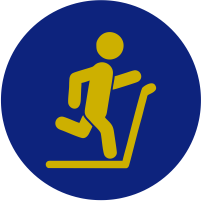Peripheral Joint Injection
What Is A Peripheral Joint Injection?
Why would a joint injection be helpful?
Injections often help relieve pain and inflammation and help improve joint movement. To control your pain, your doctor can inject medication directly into the problem area instead of prescribing pills to be taken by mouth. Injections are not a cure, but they can help you through a period of intense pain. Joint injections may offer an alternative to patients when their only other choice to relieve pain is surgery. Injections also offer relief to patients for whom surgery is not a viable option because of poor health or some other reason. Injections are used to relieve shoulder pain, knee pain, hip pain, and many other conditions resulting from acute injuries, overuse injuries, and medical conditions such as arthritis.
What happens during the procedure?
The procedure may or may not be performed under fluoroscopy (visual diagnostic examination on a screen or monitor), depending on the joint. Hip joints and certain shoulder joints are injected under fluoroscopic guaidance, whereas more superficial joints, such as the knee do not require x-ray guidance. The overlying skin is first cleansed, then anesthetized with numbing medication. Carefully, a thin needle is then guided into the joint, usually with minimal if any discomfort. A mixture of numbing medication and cortisone is then injected into the joint. The entire procedure only takes minutes, but the benefits can last for months.
What should I do and expect after the procedure?
Shortly after the procedure, you will be asked if your usual pain has improved. On occasion, you may feel numb, slightly weak or have an odd feeling in your joint for a few hours after the injection. You may notice a slight increase in your pain lasting for several days as the numbing medication wears off before the cortisone becomes effective. Ice will typically be more helpful than heat in the first 2-3 days after the injection. You may begin to notice an improvement in your pain 2-5 days after the injection. If you do not notice improvement within 10 days after the injection, it is unlikely to occur. You may take your regular medications after the procedure. On the day after the procedure, you may return to your regular activities. When your pain is improved, start your regular exercise/activities in moderation. Even if you are significantly improved, gradually increase your activities over 1-2 weeks to avoid recurrence of your pain.
Our team is here for you
We offer the best, least invasive and least aggressive options to relieve your pain and symptoms so you can get back to the life you love. Atlantic Orthopaedic Pain Management Team has convenient locations in Virginia Beach, Norfolk and Chesapeake.



